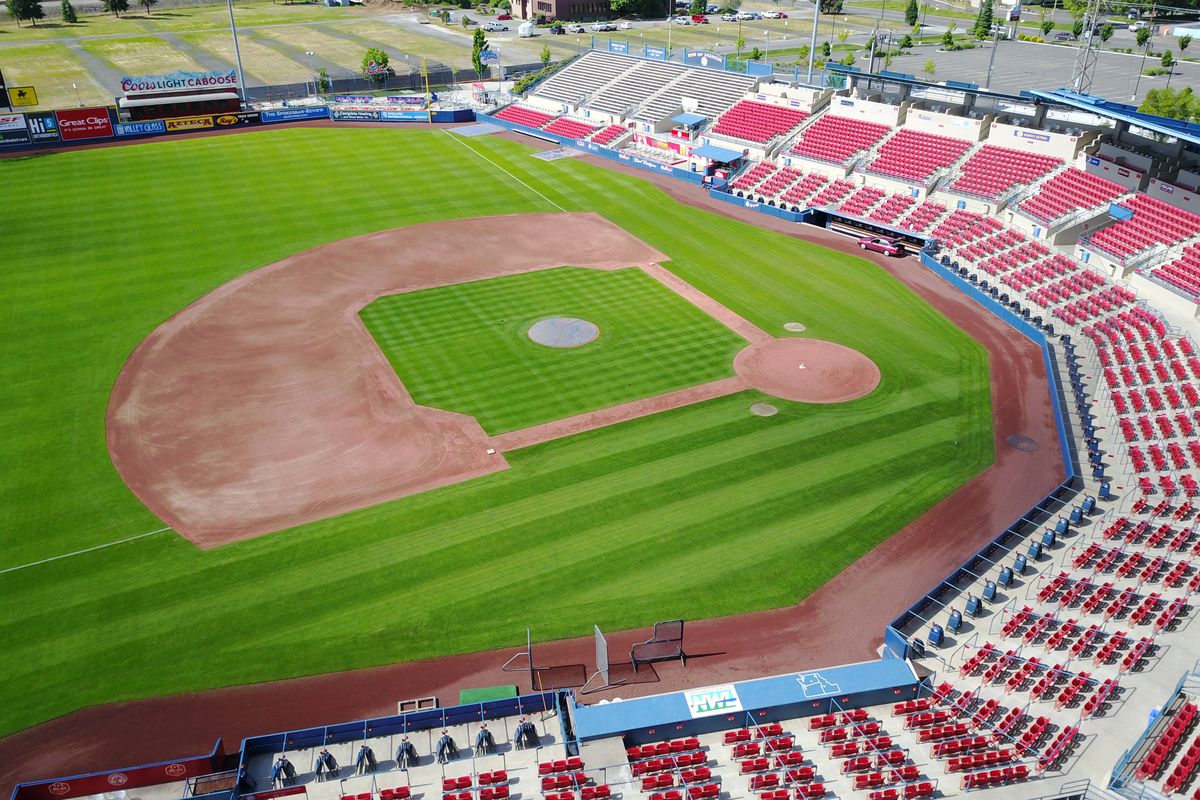Buy me some peanuts and Cracker Jack and $23 million in stadium upgrades

Avista Stadium could get as much as $23 million worth of renovations in the next four years.
Last week, ALSC Architects Principal Rustin Hall presented Spokane County commissioners with 24 proposed upgrades that would prepare the Spokane Indians’ park for long-season baseball, bring it into compliance with Major League Baseball regulations and add new amenities for fans.
The changes will happen incrementally during offseasons from now until March 2026. The roughly $23 million figure accounts for inflation – the number would be lower in 2021 dollars – but the county and Indians could lower the cost by opting against some spectator amenities.
Some Avista Stadium upgrades will have to happen whether the county and Indians want them or not.
Major League Baseball is requiring minor league teams to upgrade their facilities for players and coaches. For instance, the Indians need to literally level the playing field, install a new drainage system and build new batting cages.
Weather is forcing the Indians to make other changes.
From 1983 until 2021, the Indians were a short-season baseball team, starting the season in June. This year, they climbed up the minor league ranks to High-A, which comes with a longer season. Opening day is in April now, and Avista Stadium needs to be modified to accommodate cold-weather baseball.
The Indians and the county – which owns Avista Stadium – could improve the ballpark for fans, too. For instance, the team could extend the concourse so that it loops around the outfield.
Regardless of which renovations the Indians and county ultimately want to pay for, the park itself is in good shape.
Even though Avista Stadium was built in 1958, Hall said its “bones are really good.”
The county and team will need to spend a minimum of $12-15 million just to comply with MLB standards, but building an entirely new stadium – which Hall said would cost $60-70 million – won’t be necessary.
“(Avista Stadium) has been really well maintained,” Hall told the commissioners. “It was really well-built to begin with; very few signs of structural fatigue.”
Spokane Indians President Chris Duff said the renovations are in the early planning stages right now, so he’s not exactly sure how the team and county will share the costs, but he said no matter what happens, the spirit of Avista Stadium won’t change.
“The 1958 feel is something that’s been important to us with all of the renovations that we’ve pursued over the last two decades,” Duff said. “We want to ensure we keep that nostalgic feel.”
Making minor league life better
Major League Baseball has made sweeping changes to the minor leagues in the last two years. MLB has reduced the number of minor league clubs, raised player salaries and mandated that teams pay for player housing in some instances.
Those changes received widespread coverage in the sports world. Cutting minor league teams drew criticism. Improvements to player pay and housing were welcomed, but came after years of player lobbying.
New requirements for ballparks have mostly flown under the radar.
The higher MLB standards mostly affect older minor league parks, such as Avista Stadium.
Teams have to do everything from providing players full kitchen access to ensuring that female coaches and umpires have their own facilities. All minor league parks have to comply with the new MLB rules by the start of the 2026 season.
The most expensive MLB-mandated changes for the Indians affect the playing field, clubhouses, dugouts and lighting.
The Indians started field work this fall, tearing up 4-6 inches of dirt and grass in order to level the field and install a drainage system which should prevent puddles from forming in the outfield this spring.
New lights, which will cost over $1 million, will help players see the ball better at night.
It’s likely that MLB will require the team to add a new video board, which will have replay capabilities. A new, old-fashioned, hand-operated scoreboard like the ones at Wrigley Field and Fenway Park, could be coming, too. Those two upgrades would cost more than $1 million combined.
Both the home and visitor’s clubhouses have to be expanded to give players more space. Per MLB’s new rules, every minor league clubhouse has to be at least 1,000 square feet. The clubhouse remodels will cost more than $2.5 million each. The dugouts have to be expanded and redone, too.
This fall and spring’s field work will cost more than $200,000, but it’s only enough to get the field ready for 2022.
The team is going to do a more thorough job before the 2024 season, removing 18-24 inches of the playing surface. That project will be in the $2 to 3 million range.
The Indians also have to make some upgrades for practical reasons. They need Avista Stadium equipped for April baseball. The outfield improvements should help take care of spring rains, but the team needs to make a handful of heat-related upgrades too.
For instance, the concessions building needs insulation so that concessions workers stay warm. That project will cost about $400,000.
More fun for fans
Watching a game at Avista Stadium could be a lot different in a few years.
If the county and Indians decide to pay for it, the ballpark could get an elevated concourse that would wrap around the entire field. Fans would be able to walk a full circle around the park and watch the game from beyond the outfield fence. Adding a 360-degree concourse would cost about $2 million.
Avista Stadium could see another interesting fan improvement. The team could build “expanded” dugouts for about $400,000. Fans would be able to buy tickets for the extended dugout area and watch the game from the players’ perspective.
Overall, the proposed spectator improvements would cost roughly $5 million.